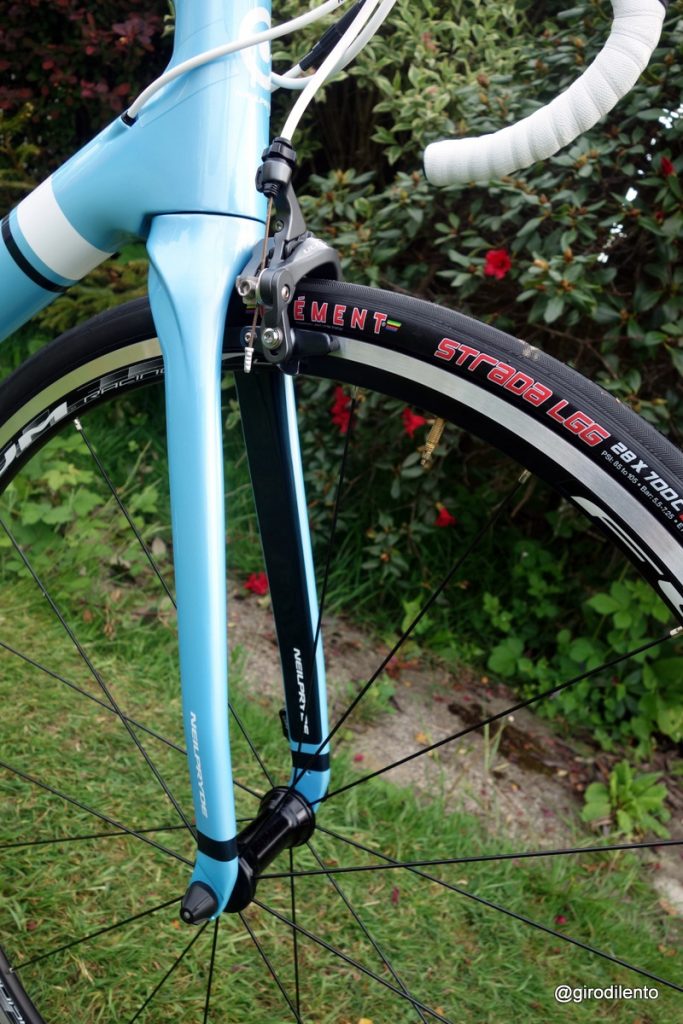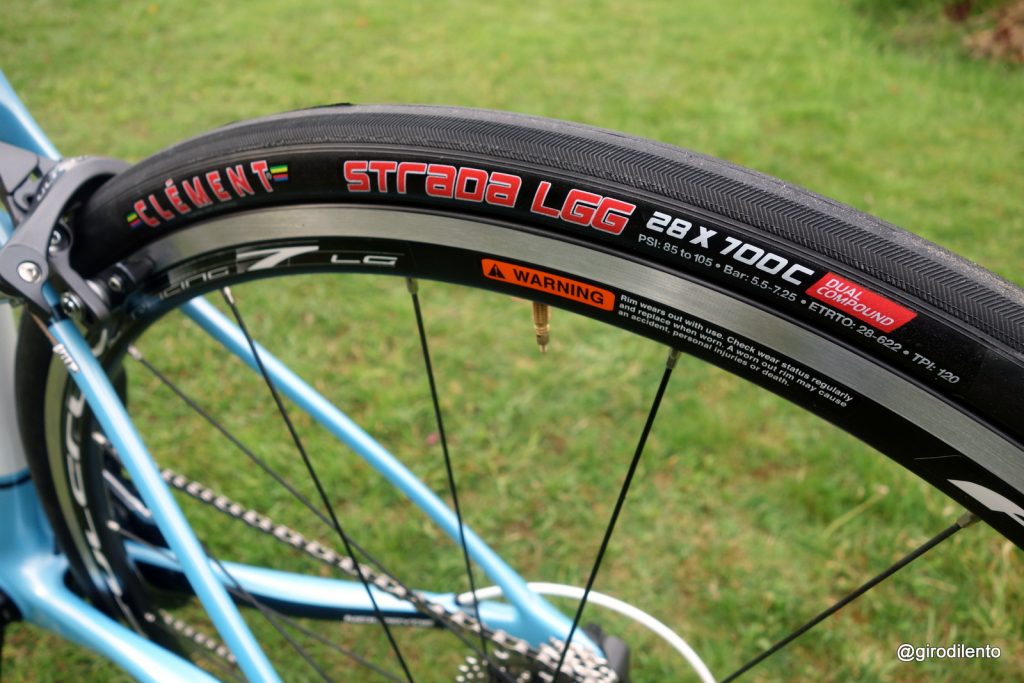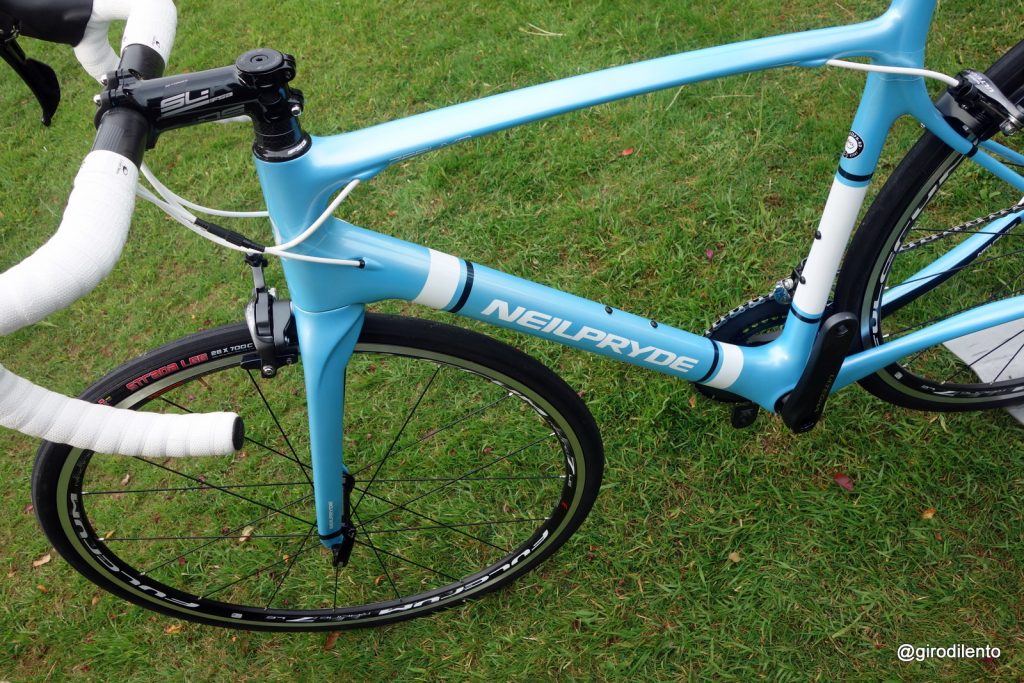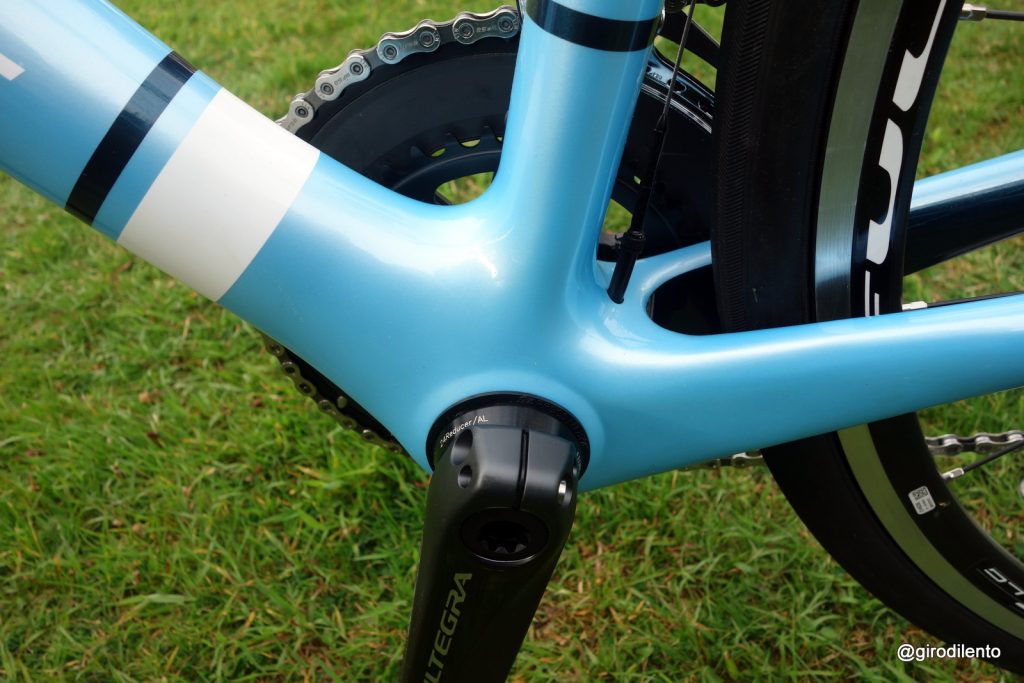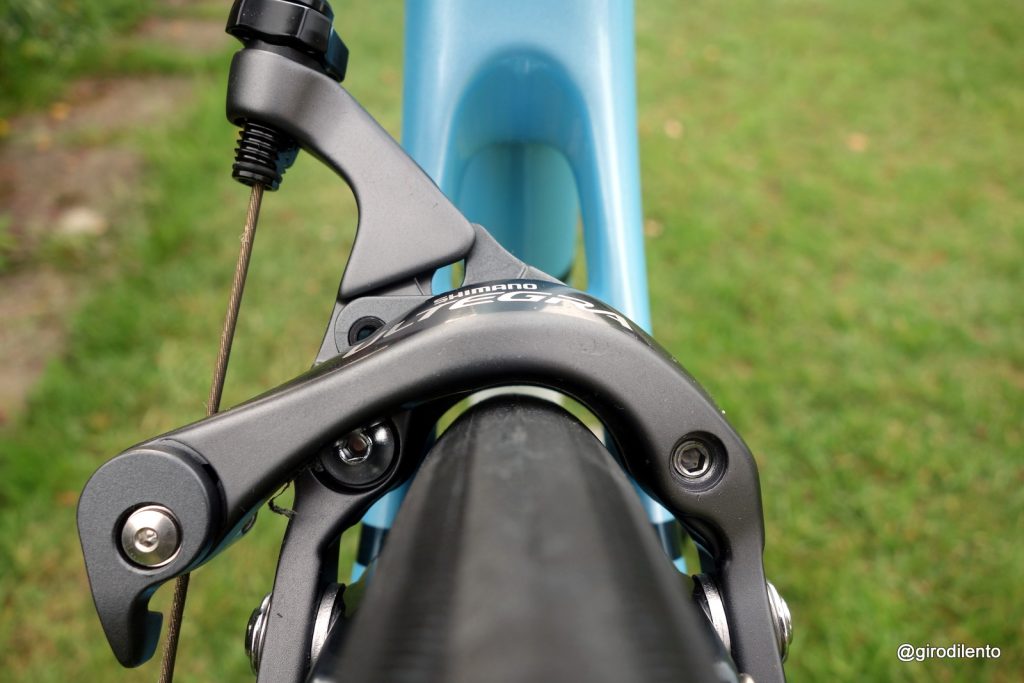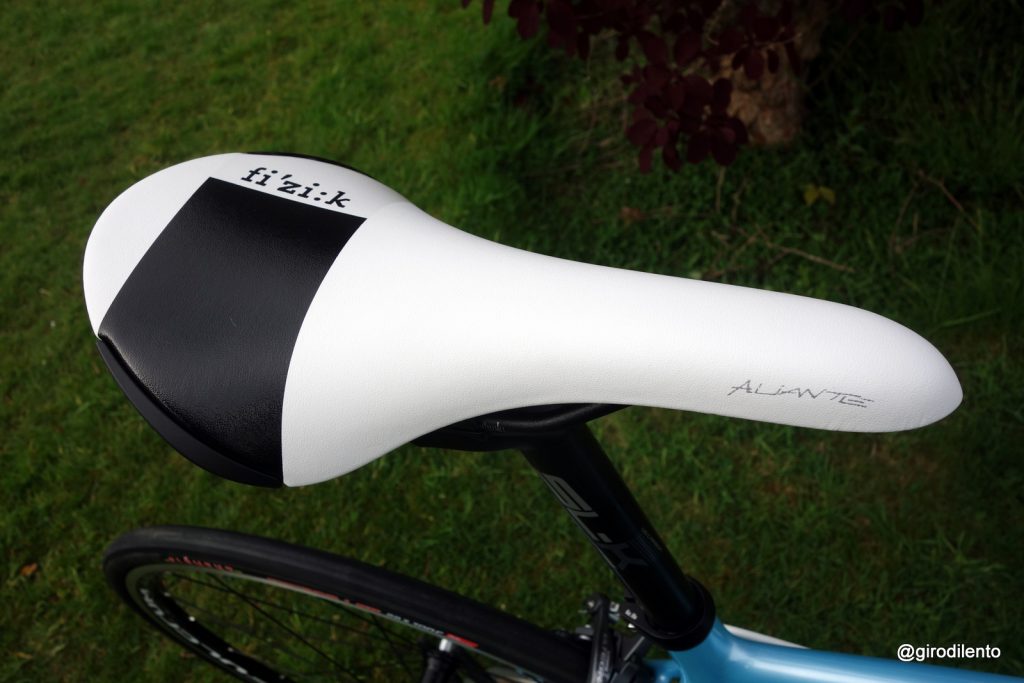I’ve ridden NeilPryde Bikes since the brand launched back in 2010. To date, according to a quick glance at my Strava history, I’ve ridden nearly 7,000km on NeilPryde bikes (mostly on the girodilento Hall of Fame NeilPryde Nazare) but I’d never tried the brands Zephyr endurance offering.
Since its launch I’d been curious about how the NeilPryde Zephyr compared to the race bikes in ride quality, fit and fun. NeilPryde have been good enough to ship me a Zephyr to review and this post is to cover my early impressions. The bike I have is a size medium Ultegra spec bike, exactly as listed on the NeilPryde website aside from two small changes. The tyres have been swapped to Clement Strada LGG in 28mm (the nicer 120TPI version) and the bar tape has been swapped out for the excellent Lizard Skins DSP tape in white. This colour and spec haven’t been on sale in the UK for 2016 and NeilPryde tell me that this particular blue Zephyr is the only one in the UK.
In the pearlescent blue that I have on test, the Zephyr looks almost a little retro and it’s certainly stopped people in their tracks. It’s been some time since I’ve ridden a bike that so many people have asked about and told me how good they think it looks.
So how does NeilPryde’s “Endurance” geometry differ from “Race”?
This is a good place to start. Compared to the race geometry of my own Nazare, the Zephyr has been changed but not as much as you’d perhaps expect. If you were expecting a sit up and beg sportive bike, then you may be disappointed. If you like the idea of a subtle softening of race bike geometry – then read on.
In simple terms using a size L bike as an example, the top tube has been shortened 5mm (less than a stem size) and the head tube has been lengthened by 15mm but in practice it’s less than that. The seat angle remains 73 degrees but the head angle slackens 1 degree to 72. The stack and reach (which is how I size) shows how the difference between the two geometries is subtle rather than striking. From race to endurance, the reach shortens 7mm and the stack rises 4mm. Part of the impact of the change in steering angle is also a lengthening of wheelbase by 13mm.
I think this relatively subtle “tweaking” of the geometry has been really well done. By not making a big change, the Zephyr should still be fun and fast to ride but with just a bit more forgiving fit and handling.
Read on to find out if that’s how it works out but for me the geometry is definitely a big tick!
The frame design:
The swooping lines of the frame and slender seat stays are all part of the focus on improved comfort. The curved seat stays are examples of this as are the curved fork blades. The tubes themselves are smaller/thinner than many race bikes and this helps with the slightly retro look.
The frame features are right up to date though, a tapered full carbon fork with carbon headset cups, Press Fit 30 bottom bracket, internal routing and compatibility with mechanical or Di2 groupsets. The seat post is 27.2mm for a bit more compliance and the product info states 28mm tyre compatibility.
Now even though the bike I have shipped with 28mm Clement tyres, I think the clearance is too tight on the rear brakes. I think this frame would be perfect with 25mm tyres. I’m not convinced you should go bigger than that. In fairness, 28mm does fit – but only just, with a mm or 2 to spare on the brake caliper.
NeilPryde talk about race performance through the bottom bracket and chainstays as well as the head tube to make sure the bike keeps the performance and speed up even after the nods to comfort in the design.
The build:
The NeilPryde Zephyr can be bought as a frameset, with a Shimano 105 build or in the spec I have here with an Ultegra build.
Much like the geometry, the build has been really nicely done. In the Ultegra spec you get a 52/36 chainset combined with an 11/28 cassette, which is perfect for most riding. It’s a complete Ultegra groupset too save for a 105 cassette and chain.
The finishing kit includes the superb FSA SL-K full carbon compact bars, with matching stem and full carbon seatpost. I’ve owned these before and they’re a terrific choice. The saddle is a Fizik Aliante which is again a very good choice for this as an endurance bike.
The wheels are fairly lowly Fulcrum Racing 7’s but they’re a tough and durable choice and at the very least make a solid winter training wheelset.
The ride:
I’ve now ridden a couple of hundred kilometres on this bike. Some with the standard wheels and some with the wheels swapped out to my Hall of Fame Reynolds 58 Aero.
Even on the stock Fulcrum wheels the Zephyr has impressed. It still has the lively ride feel of my Nazare/Alize but it’s definitely a more comfortable bike. It really came alive though when I swapped wheels to the 58 Aero. The bike feels much more like a comfortable race bike, which is what it’s supposed to be. Fun, quick, comfortable – a fine combination.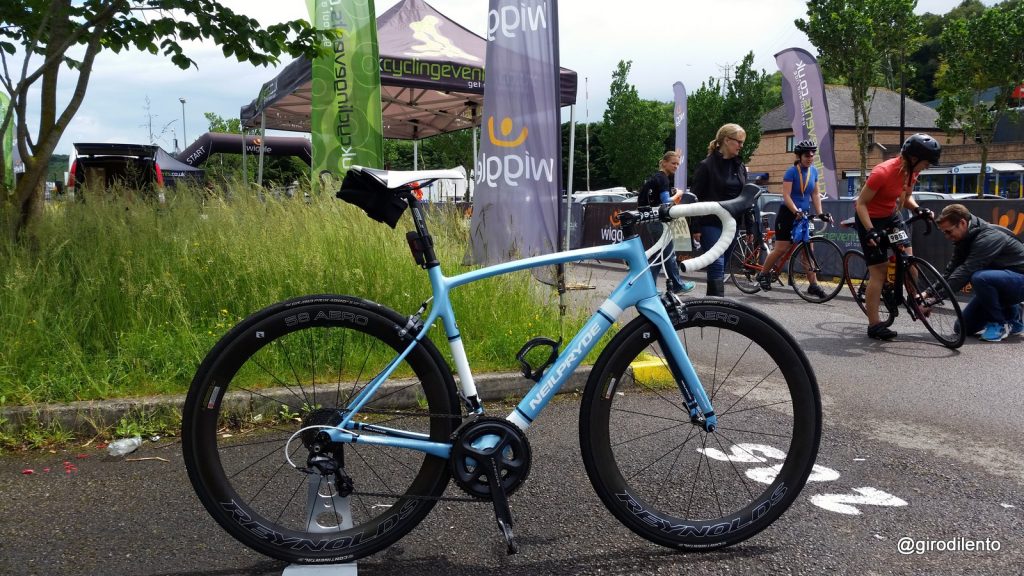
On a first few rides the NeilPryde Zephyr is a bike that does exactly what it sets out to: It’s a fun and lively bike to ride with a touch more comfort and handling that’s just a little easier to ride than a normal race bike. The tweaked geometry is a success as is the bike itself and it looks terrific in this pearlescent blue. I’ll spend some more time on it to see if my views shift but I’ve been very impressed to date.
Find out more here: http://www.neilprydebikes.com/bikes/zephyr/
I’ve now posted my review of the Zephyr, which you can find here:
Thanks for reading
If you’ve found this post useful, please consider subscribing to girodilento premium today to help us produce more great content. Subscribers also get access to our pro cycling coverage, premium interviews and the ability to give suggestions for future posts.
You can subscribe now for less than 3p per day by clicking on the green button below:
[mepr-membership-registration-form id=”20566″]

